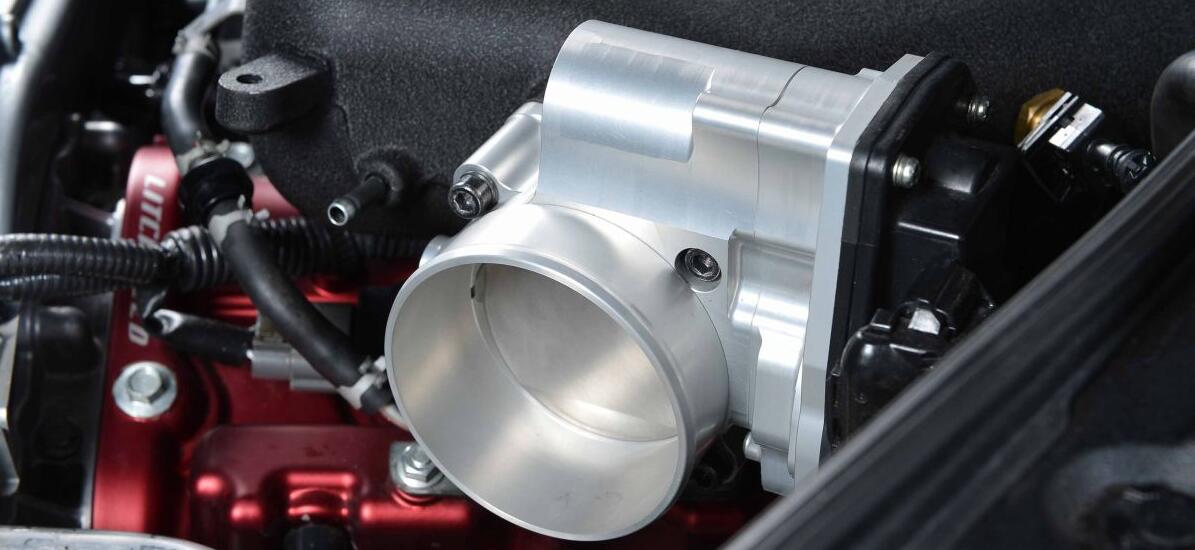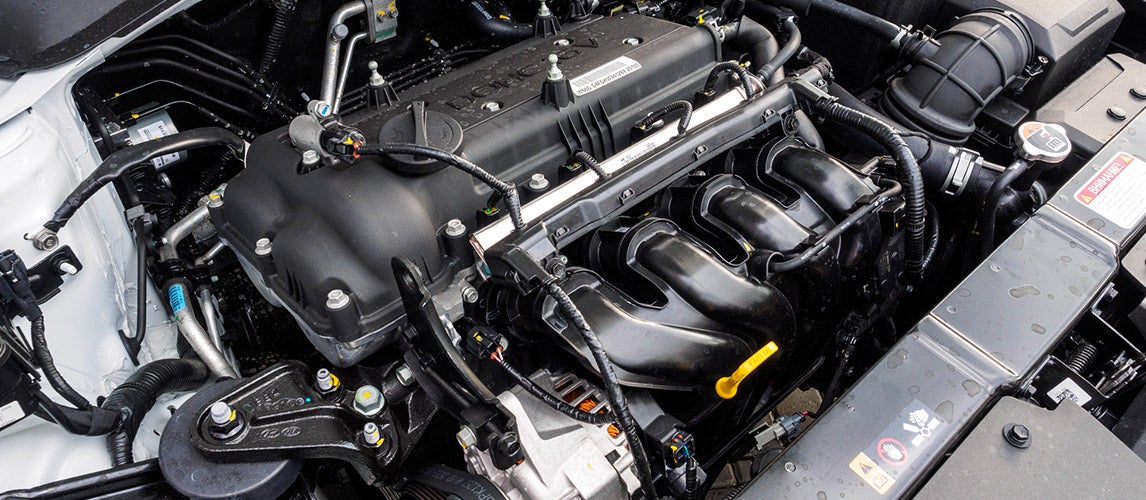
Carbon deposits are very harmful to the engine. Some people buy a variety of products to clean up this stuff. They also seek help from mechanics. We can't say these behaviors are ineffective, but not all the problems can be solved. Different cleaning methods are applicable to carbon deposits in different places.
In simple terms, carbon deposits are things that have been produced in the intake system, exhaust system, and combustion chamber when the engine is running. These things stick on the surface of the parts. They are difficult to remove. Carbon deposits can have an impact on the normal operation of the engine.
We always talk about carbon deposits. But how are they formed in the engine? In fact, the causes of these things in different parts are different. I will introduce the reasons for the formation of carbon deposits in every possible component.
The throttle is a part of the front section of the engine intake pipe. Most of the carbon deposits on the throttle is actually sludge. The culprit is the crankcase ventilation system.
The crankcase ventilation system takes some crankcase exhaust gas into the intake manifold when the engine is working. The exhaust gas has some greasy oil vapour. The intake manifold is not far from the throttle.
After the engine stops, this part of steam may flow back to the throttle. The oil vapour is attached to the back of the throttle. Then it adsorbs some dust to form the sludge.

The carbon deposits on the front of the throttle come from the intake pipe of the crankcase ventilation system. The pipe locates just in front of the throttle. When the engine is working, this pipe delivers air to the crankcase.
But after the engine shuts down, the exhaust gas in the crankcase may flow back. This process leads to throttle contamination.
The intake manifold directly connects to the engine cylinder. It's the place where filtered air is distributed to each cylinder. Carbon deposits in the intake manifold are also mainly sludge.
When the engine works, the crankcase exhaust gas constantly flows through the intake manifold. The oil vapour inside is easily trapped on the inner walls of the intake manifold.
Also, when the valves overlap in certain engine conditions, there may be a small amount of hot gas running back into the intake manifold, making this sludge slightly hard.
Theoretically, carbon deposits in the intake manifold can affect the airflow, but the effect is not very obvious in daily use. The main reason is that when we drive cars every day, the engine is very low, and the intake volume is not very large.
So the carbon deposits on the inner wall of the intake manifold do not have a significant effect on airflow. However, in some heavy load conditions, when a large amount of airflow passes through the intake manifold, the intake air can be significantly affected.
The most common daily occurrence of carbon deposits happens in cars with variable intake manifolds. The variable intake manifold is actually designed with two different airflow channels inside the intake manifold, a long intake channel at low engine speed and a short intake channel at high engine speed.
The rotation of the flap adjusts the length of the air intake. Sometimes severe carbon deposits cause the flap not to work correctly. This is when it is prone to failure.
Here we have to distinguish between the manifold injection engine and the direct injection engine. The manifold injection engine is also commonly known as the EFI engine, which is generally located at the end of the intake manifold, near the location of the intake valve.
Carbon deposits are easily formed at the injector nozzle. The accumulation of impurities inside gasoline mainly causes this symptom.
For example, after the engine shuts down, the temperature is still very high. The residual gasoline on the injector nozzle will gradually evaporate. And the impurities in the petrol can not vanish on the surface. As time goes by, they accumulate more and more.
However, in general, this phenomenon is not too serious at the injector nozzle.
The carbon deposits in the fuel injection nozzle may lead to poor fuel injection atomization. Firstly, there is a fuel consumption problem. Secondly, poor fuel atomization leads to inadequate combustion and reduced power.
Meanwhile, It also causes inconsistent gas mixtures in the cylinders, unstable combustion, and unstable engine operation.
The intake valve is the channel through which air enters the cylinder. The intake valve opens. Air or combustible mixture enters the cylinder. The back of the intake valve is the most accessible place to form carbon deposits.
The main source is the oil vapour in the crankcase exhaust gas, which is attracted to the intake valve when it passes through.
There is also a portion that comes from impurities and heavy components in the petrol. These oil particles and impurities stick to the intake valve and gradually carbonise at high temperatures. This process helps to form hard carbon deposits.
Carbon deposits in the intake valve of a direct injection engine are worse than in a normal EFI engine because the intake valve of the direct injection engine passes through air and crankcase exhaust gas.
The EFI engine intake valves are flushed with petrol, so carbon deposits are relatively slow. However, this does not mean that the intake valves of EFI engines do not accumulate carbon.
Carbon deposits in the combustion chamber mainly come from fuel combustion residues, such as too much petrol impurities, incomplete combustion, and engine oil burning. All of which can cause symptoms in the combustion chamber.
Too many carbon deposits in the combustion chamber result in a smaller chamber volume and a higher actual engine compression ratio, making it more prone to detonation.
Sometimes a hot spot on the carbon surface can also ignite the air-fuel mixture before the spark plug ignites. The problem causes the engine ping.
The spark plug locates in the combustion chamber. It can also produce carbon deposits. In addition to the spark plug's insufficient combustion, the spark plug's wrong thermal value can also cause the issue.
If the thermal value of the spark plug is lower than the specified value, it leads to a low spark plug temperature and reduces self-cleaning ability when the engine is running.
Carbon deposits in the spark plug lead to difficulties in the ignition. And the carbon deposits have a specific conductivity.
The severe carbon deposits lead to a slight short circuit between the central and side electrodes. The ignition energy will drop, and the spark plug will be less likely to ignite.
At this time, the engine misfire rate increases. The fuel consumption increases, and power decreases. In severe cases, the check engine light will stay on.
Carbon deposits at the top of the piston mainly come from incomplete combustion of petrol and gas mixtures. When the fuel enters the cylinder and meets the hot piston top, the petrol evaporates quickly.
Impurities and heavy components in the petrol remain on the piston top and then become hard after burning at high temperatures.
Some carbon deposits on the top of the piston can be burned to very high temperatures during engine operation. The process can easily cause premature combustion of the mixture and thus lead to engine detonation.
Piston rings are divided into oil rings and air rings. The oil ring is responsible for lubrication. The oil passes through the pore of the ring and is evenly applied to the cylinder walls. The air ring is mainly used for sealing. The ring itself changes in angle as the piston moves up and down.
Carbon deposits in the oil ring can lead to poor lubrication of the cylinder wall. The problem in the air ring can lead to air flow from the cylinder and abnormal friction between the piston ring and the cylinder wall. This will eventually lead to cylinder pulling.
The role of the EGR valve is to open channels under certain operating conditions to direct a portion of the engine exhaust gas into the cylinder to participate in combustion. This is a system that improves the quality of exhaust gas emissions.
As the EGR valve is fed with high-temperature exhaust gas, the valve body is easy to accumulate carbon over many years. These carbon deposits mainly come from incomplete combustion of the exhaust gas.

Carbon deposits in the EGR valve will cause the EGR valve to close poorly. The engine has a high intake at a high rotation speed. The adulterated exhaust gas is not a real problem.
However, the air intake is particularly small when the engine is idling. At this time, some exhaust gas will be mixed. This will cause the combustion to deteriorate. The engine's idle speed will be extremely unstable. It is only necessary to remove and clean the valve.
 Lauritz Carolsfeld
Lauritz Carolsfeld  October 29, 2021
October 29, 2021

